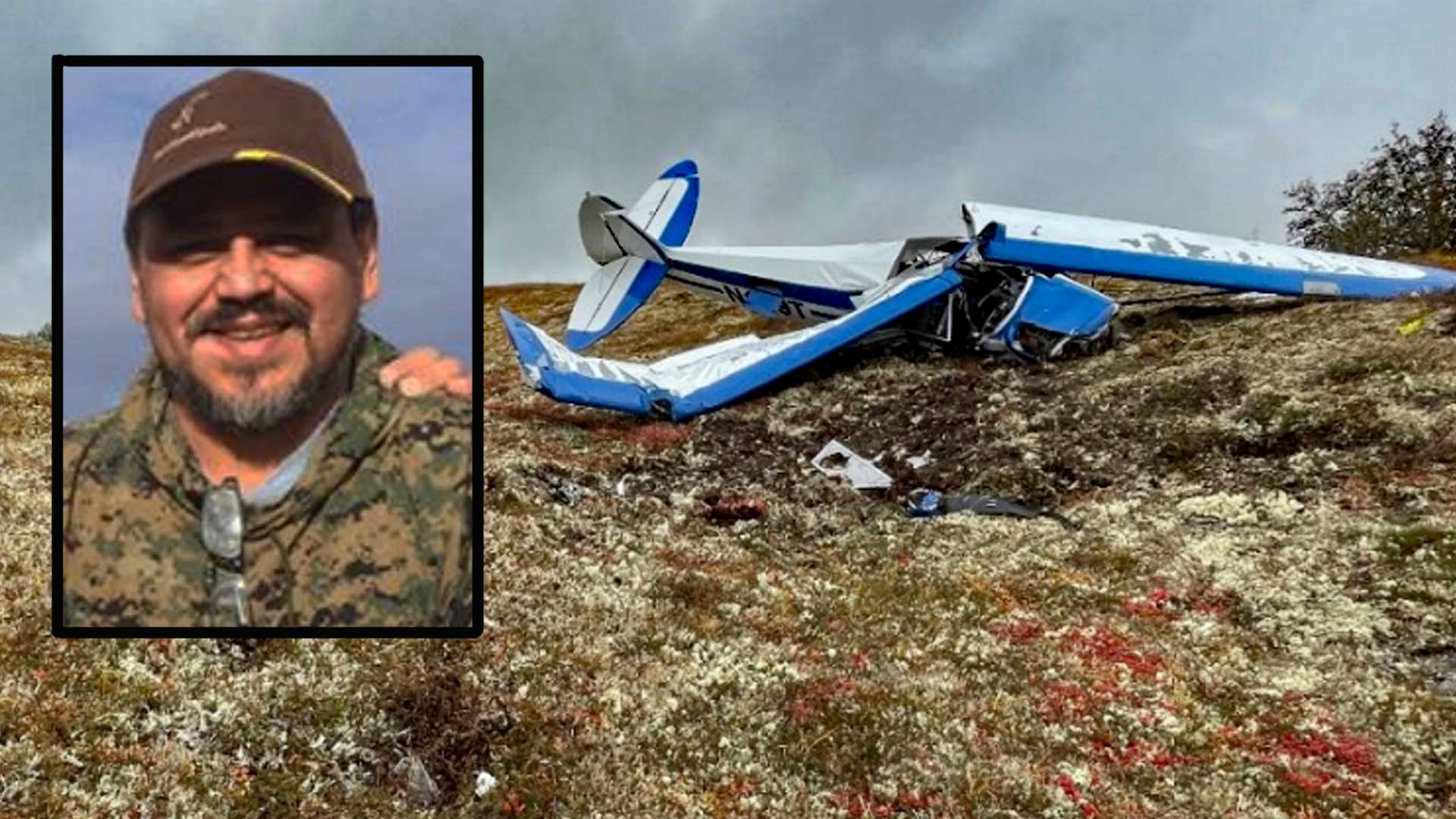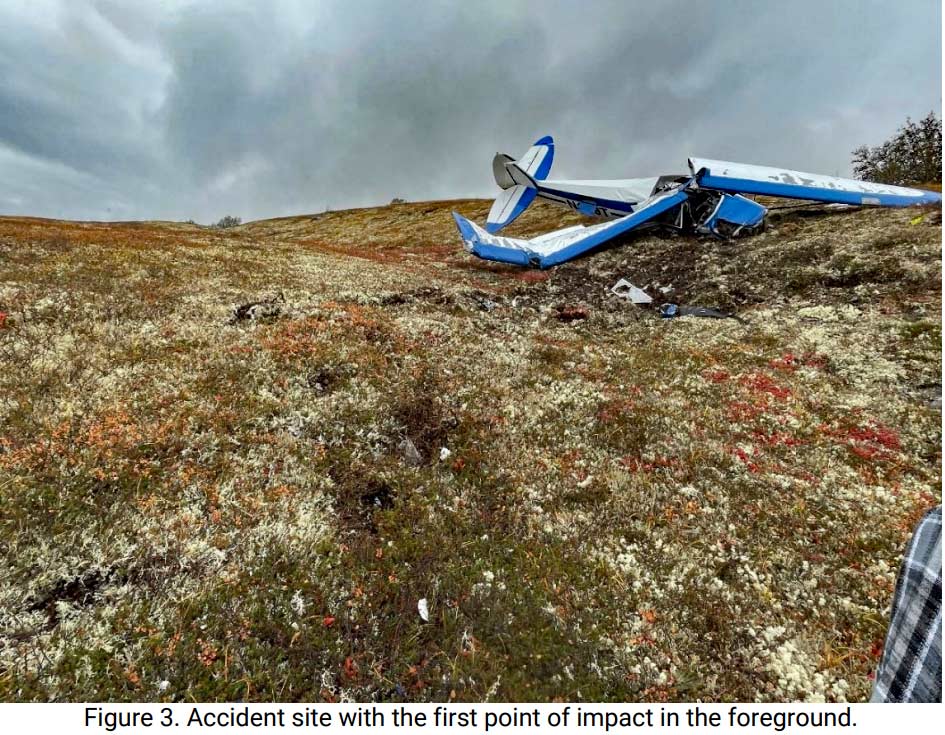
A preliminary report from the National Transportation Safety Board reveals the details of the Sept. 12 plane crash that killed Eugene Peltola, Jr., the husband of U.S. Rep. Mary Peltola.
The report states that Mr. Peltola was flying a Piper Super Cub loaded with moose meat and antlers strapped to the outside, which he was transporting for two hunters. His plane crashed shortly after takeoff, and the hunters were the first to respond to the accident. They found Mr. Peltola alive and conscious, but he succumbed to his injuries before medical help could arrive. Below is the preliminary report.
Aviation Investigation Preliminary Report
On September 12, 2023, about 2047 Alaska daylight time, a Piper PA-18-150, N109T, sustained substantial damage when it was involved in an accident near St. Mary’s, Alaska. The pilot was fatally injured. The airplane was operated as a Title 14 Code of Federal Regulations Part 135 on-demand flight.
Two days before the accident, the pilot ferried a group of five hunters, a guide, and their equipment from the operator’s base in Holy Cross, Alaska. The group then set up camp next to the landing strip, which was oriented north-south within hilly terrain about 80 miles northwest of Holy Cross.
The group planned to hunt for a moose and prepare it for transportation back to the operator’s base. During the day before the accident, the group successfully hunted a moose and coordinated with the pilot, via satellite messaging devices, to ferry the meat the next day. On the day of the accident, the pilot arrived at the camp about 1540 (3:40 p.m.). The pilot and hunters loaded the airplane with the first batch of meat, and the airplane departed to the north from the airstrip. After takeoff, the airplane made an uneventful climbing right turn over an adjacent ridgeline that paralleled the airstrip to the east and then continued in the general direction of Holy Cross.
The pilot returned to camp about 1940 for the second and final load of meat. During the next hour, the pilot and the hunters loaded the airplane with the meat. One of the hunters reported that the airplane held about 50 to 70 pounds more meat than during the previous flight. The meat was strapped into the rear passenger seat area with both the seatbelt and rope and was loaded into the airplane’s belly pod, which did not have tie-down provisions. The pilot then tied the antlers to the right wing strut; the antlers were cupped outward and perpendicular to the direction of flight.
The pilot told a hunter that he had performed fuel calculations and would be at reserve fuel levels on arrival at Holy Cross. Both discussed the weather and observed that the wind at the airstrip was generally calm and from the north but that the wind was also intermittently variable and gusting.
Members of the group reported to the pilot that the wind was gusting much stronger at the departure end of the airstrip.
The pilot then boarded the airplane and positioned it for a departure to the north. The hunters noticed that the ground roll was slightly longer than before, and that the airplane appeared to be more “labored” than during the previous flight. They stated that, as the airplane reached the end of the airstrip, it pitched up and turned sharply to the right but, rather than climbing as before, the airplane flew behind the adjacent ridgeline and out of view. The group initially thought that the pickup had been successful, but the airplane did not reappear from behind the ridge. The group ran to the top of the ridgeline, looked down, and saw that the airplane had crashed.
One of the hunters approached the accident site and found the pilot still conscious. The hunter activated the SOS feature on his satellite messenger device, but the pilot succumbed to his injuries within two hours of the accident.
The airplane’s emergency locator transmitter activated during the accident, and an alert signal was received by the Alaska Rescue Coordination Center about 2048. According to the hunters, an Alaska Air National Guard team arrived at the accident site via helicopter between 0130 and 0200 on September 13.
One of the hunters recorded a video of the accident takeoff. The video showed that the airplane began the ground roll at the southern end of the airstrip and departed to the north and uphill. The flaps were retracted, and the tail of the airplane came up as soon as the pilot applied engine power (see figure 1).
The ground roll lasted about 530 ft, and, immediately after takeoff, the airplane pitched up and rolled about 20° right. The airplane then appeared to roll to a wings level attitude. The video ended a few seconds later and it did not capture the accident. The engine was heard operating during the recording, and the airplane was not trailing smoke or vapors.

A team comprised of the National Transportation Safety Board investigator-in-charge and technical representatives from the Federal Aviation Administration, Piper Aircraft, and Lycoming Engines responded to the accident and arrived on site on September 15. Examination revealed that the airplane came to rest on a 30° downward slope on the other side of the adjoining ridgeline, at an elevation of 1,210 ft mean sea level, about 10 ft lower, and 600 ft east of the departure end of the airstrip (see figure 2). The surrounding area consisted of rolling hills covered in tundra, grass, and low-lying shrubs and bushes.

The fuselage was on a north heading, and both wings remained partially attached and generally in line with each other on a northwest-southeast orientation. The first identified point of impact, which was located about 20 ft below the main wreckage, consisted of a divot in the soil that contained blue and white fragments that matched the right wingtip (see figure 3). Next, the right wing landing light assembly and right window frame were located about 5 ft uphill in a west direction. A large divot in the soil, which was located 5 ft farther uphill, matched the general dimensions of a main landing gear tire. Adjacent to this hole was the propeller, which had separated from the crankshaft.

The engine contained oil, and no evidence indicated a catastrophic engine failure. Although the wing tank fuel lines had been breached, residual quantities of fuel were observed in both tanks. Both propeller blades exhibited similar damage, including tip twist, leading-edge nicks and dents, trailing edge S-bending, and chordwise scratches.
The airplane cargo was weighed at the accident site, revealing a load of about 520 pounds that consisted primarily of moose meat and a set of moose antlers. About 150 pounds of meat was found in the forward section of the belly pod; the remaining portions were firmly secured in the rear cabin seating area. The antlers were secured to the inboard side of the right-wing strut.








8 Comments
It’s sad that this happened. R.I.P. Mr. Pectrola. Prayers for your family!
Timing of that crash and who died is still suspect in my mind! Now that I know what is happening in this world, looking back at all of the political figures that “died in accidents” is suspect.
From the looks of that image, it had curved moose antlers hanging in line with the air flow to, and under the wing…. With a heavy load, and interference with the wing lift, that may have been a couple of critical factors… The upper foil of the wing surface creates the lift vacuum, but any underwing pressure interference, I would think that it added to the overweight issue… Just a thought.
Oh well
From a history and family with small bush planes all of my life, my heart goes out to the loved ones of these pilots and passengers. We don’t read about the close-calls and the near death experiences which are so numerous, but only the ones which end like this one did.
The M in my name stands for McMahan.
When this happened and i read the article I said to myself he overloaded the plane. why would I think that, because it happens every hunting season.
“Loaded with moose meat” should read “overloaded with moose meat”. It just ain’t worth pushing the envelope, but it has been happening in Alaska for the better part of a century.
Are death announcements an optional thing or does the state require that, at least, name and date of death be made public? I cannot recall. Have not seen an obit for Mr. Peltola yet.